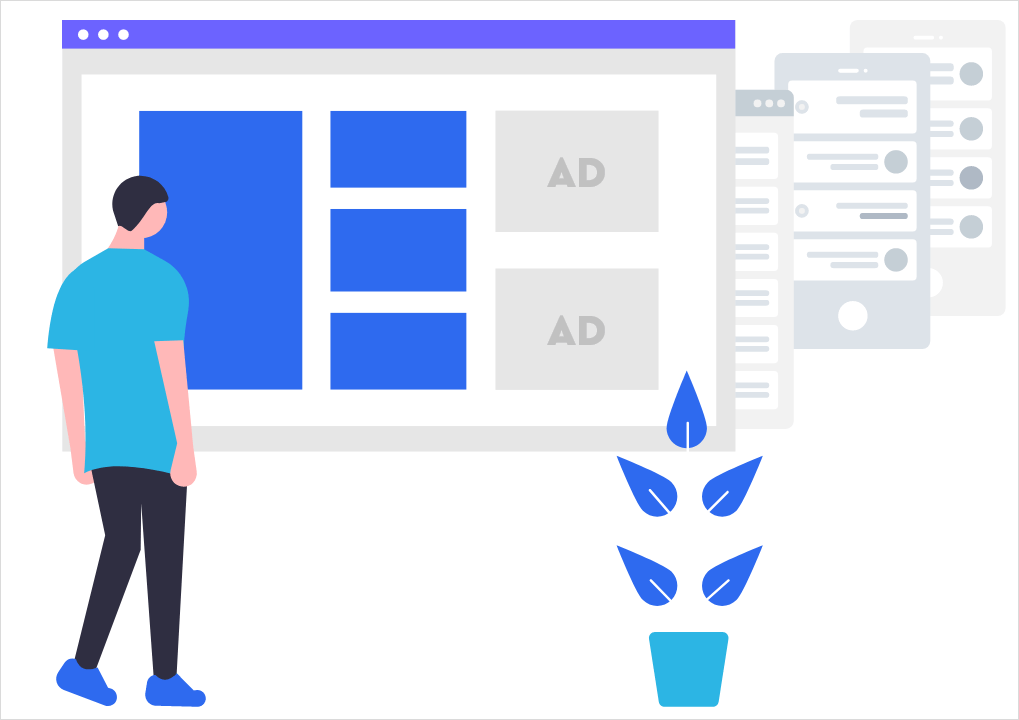No one has an unlimited attention span. Given the fast-paced world we live in and the limited time we get to spend on the internet every day, it’s hardly surprising that we don’t pay attention to everything we see online. Okay, who am I kidding? Most of us spend hours and hours of our precious time on the internet every day even though we have limited attention spans.
This causes more than just Ad Fatigue, it causes Banner Blindness as well. Now, for those unfamiliar with the term, banner blindness refers to a user’s tendency to overlook or ignore a Display Ad they come across online simply because they’re not interested in it. You may think that with all the advancements in Digital Marketing and the evolution of Programmatic Advertising, companies and agencies have found a viable solution to overcome banner blindness. Sadly, this isn’t the case.
If you want to beat banner blindness effectively, you’ll have to understand what causes it in the first place. This behavior is mainly observed among viewers who are either not interested in the product you’re advertising or are looking for another product altogether and your ads are getting in the way. For instance, if a user is looking for a piece of furniture online and all they’re seeing on every webpage they open is ads for smartphones, they’re not likely to pay attention to the latter, are they?
One of the many culprits behind banner blindness is the overdose of information users are bombarded with every day. Think about it, every time you use the internet you find everything from news and entertainment to ads and academic information within a matter of seconds. In such a scenario where various items are competing for your attention, it makes absolute sense that you’re bound to ignore one or more of these items. And what’s easier to ignore than the boring old ads you’re forced to view?
Another matter to consider is that if a user is going through an informative article online and constantly comes across Display Ads for products they just don’t want to buy, they won’t want to view these ads and if they do spare them a glance, they may do so in an irritable way. After all, if your ad doesn’t serve their interests and provides nothing more than an unwelcome distraction instead, that’s a bad look for the website as well. Why do you think Wikipedia doesn’t run ads?
The concept of banner blindness can negatively impact even the most creative ad campaigns and affect click-through rates (CTR). Therefore, companies and ad agencies must use every strategy at their disposal to beat banner blindness. The most effective of these strategies would be to improve the targeting of your ads. If you’re going to run ads for a software engineering course on a website that caters to finance students, do you honestly think you’re going to achieve great user interaction?
The key here is to determine where your target audience will be spending its time online and run your Display Ads there. However, beware that several competing companies will be running their ads on the same or similar websites so you’ll need to ensure your ad truly stands out. This way you’ll be able to convert clicks to sales better and increase your conversion rate effectively.
Speaking about ads that stand out, another great way to deal with banner blindness is to create ads that are worth looking at. If you’re going to bombard your users (who are currently uninterested in viewing Display Ads) with plain, boring ads that just don’t spark their imagination, don’t expect them to engage with your ads. Instead, spend enough time and money on designing your ad in such a way that makes it hard to ignore. Using catchy phrases or good graphic design will help you get there, as long as these tools adequately highlight the product/service you’re promoting.
A common mistake several advertisers commit when it comes to running Display Ads is that they showcase these ads to users based on their past preferences. Sure, this technique often proves effective and boosts sales for most companies, but we must remember that with the introduction of high-speed internet services in various parts of the world, users can find what they’re looking for quicker than you’d believe. In other words, there’s a high chance the user who was looking for a pair of sunglasses yesterday has already found one today, so they’re not interested in seeing your ads for the same anymore. Leaving aside the fact that new generations (millennials and Gen-Z, among others) tend to switch between interests at top speed, so maybe they were into sunglasses yesterday, and into traveling to the Bahamas today.
The location of your ads is another important determinant in the world of Digital Ads, though this is often ignored. You may think: what does it matter where I place my ads on a webpage as long as it features great content and targets the audience I’m going for? This is completely the wrong approach to take! One of the many reasons that users suffer from (or indulge in?) banner blindness is that they’ve learned where ads are featured on a webpage and avoid diverting their gaze to that area.
A good example of this would be the ads that Google features on their search results page right at the top that most of us ignore. You could overcome this snag by considering the placement of your ads on a given page and test whether or not it engages a user’s attention. You could conduct a small study with a few participants and test how many of them notice an ad placed at different locations on the same page and take it from there.
In conclusion, banner blindness may have been around for a while and it’s not exactly easy to overcome, given the overexposure to the internet most people suffer from today. However, this doesn’t mean it cannot be overcome with the help of the right tools, tips, and tricks that we’ve outlined above.






